Benzyl isothiocyanate suppresses pancreatic tumor angiogenesis and invasion by inhibiting HIF-α/VEGF/Rho-GTPases: pivotal role of STAT-3
- PMID: 22016776
- PMCID: PMC3189946
- DOI: 10.1371/journal.pone.0025799
Benzyl isothiocyanate suppresses pancreatic tumor angiogenesis and invasion by inhibiting HIF-α/VEGF/Rho-GTPases: pivotal role of STAT-3
Abstract
Our previous studies have shown that benzyl isothiocyanate (BITC) suppresses pancreatic tumor growth by inhibiting STAT-3; however, the exact mechanism of tumor growth suppression was not clear. Here we evaluated the effects and mechanism of BITC on pancreatic tumor angiogenesis. Our results reveal that BITC significantly inhibits neovasularization on rat aorta and Chicken-Chorioallantoic membrane. Furthermore, BITC blocks the migration and invasion of BxPC-3 and PanC-1 pancreatic cancer cells in a dose dependant manner. Moreover, secretion of VEGF and MMP-2 in normoxic and hypoxic BxPC-3 and PanC-1 cells was significantly suppressed by BITC. Both VEGF and MMP-2 play a critical role in angiogenesis and metastasis. Our results reveal that BITC significantly suppresses the phosphorylation of VEGFR-2 (Tyr-1175), and expression of HIF-α. Rho-GTPases, which are regulated by VEGF play a crucial role in pancreatic cancer progression. BITC treatment reduced the expression of RhoC whereas up-regulated the expression of tumor suppressor RhoB. STAT-3 over-expression or IL-6 treatment significantly induced HIF-1α and VEGF expression; however, BITC substantially suppressed STAT-3 as well as STAT-3-induced HIF-1α and VEGF expression. Finally, in vivo tumor growth and matrigel-plug assay show reduced tumor growth and substantial reduction of hemoglobin content in the matrigel plugs and tumors of mice treated orally with 12 µmol BITC, indicating reduced tumor angiogenesis. Immunoblotting of BITC treated tumors show reduced expression of STAT-3 phosphorylation (Tyr-705), HIF-α, VEGFR-2, VEGF, MMP-2, CD31 and RhoC. Taken together, our results suggest that BITC suppresses pancreatic tumor growth by inhibiting tumor angiogenesis through STAT-3-dependant pathway.
Conflict of interest statement
Figures

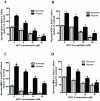
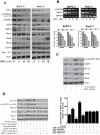
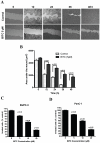
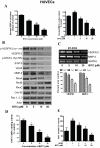
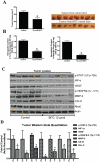
Similar articles
-
The role of STAT-3 in the induction of apoptosis in pancreatic cancer cells by benzyl isothiocyanate.J Natl Cancer Inst. 2009 Feb 4;101(3):176-93. doi: 10.1093/jnci/djn470. Epub 2009 Jan 27. J Natl Cancer Inst. 2009. PMID: 19176463 Free PMC article.
-
Magnolol suppresses hypoxia-induced angiogenesis via inhibition of HIF-1α/VEGF signaling pathway in human bladder cancer cells.Biochem Pharmacol. 2013 May 1;85(9):1278-87. doi: 10.1016/j.bcp.2013.02.009. Epub 2013 Feb 14. Biochem Pharmacol. 2013. PMID: 23416116
-
AT-533, a novel Hsp90 inhibitor, inhibits breast cancer growth and HIF-1α/VEGF/VEGFR-2-mediated angiogenesis in vitro and in vivo.Biochem Pharmacol. 2020 Feb;172:113771. doi: 10.1016/j.bcp.2019.113771. Epub 2019 Dec 18. Biochem Pharmacol. 2020. PMID: 31863779
-
A Molecular Perspective on HIF-1α and Angiogenic Stimulator Networks and Their Role in Solid Tumors: An Update.Int J Mol Sci. 2024 Mar 14;25(6):3313. doi: 10.3390/ijms25063313. Int J Mol Sci. 2024. PMID: 38542288 Free PMC article. Review.
-
Mast cells and angiogenesis in pancreatic ductal adenocarcinoma.Clin Exp Med. 2018 Aug;18(3):319-323. doi: 10.1007/s10238-018-0493-6. Epub 2018 Feb 28. Clin Exp Med. 2018. PMID: 29492715 Review.
Cited by
-
Mechanistic insights into self-reinforcing processes driving abnormal histogenesis during the development of pancreatic cancer.Am J Pathol. 2013 Apr;182(4):1078-86. doi: 10.1016/j.ajpath.2012.12.004. Epub 2013 Jan 31. Am J Pathol. 2013. PMID: 23375449 Free PMC article. Review.
-
Glucosinolate-derived isothiocyanates impact mitochondrial function in fungal cells and elicit an oxidative stress response necessary for growth recovery.Front Plant Sci. 2015 Jun 3;6:414. doi: 10.3389/fpls.2015.00414. eCollection 2015. Front Plant Sci. 2015. PMID: 26089832 Free PMC article.
-
Ultrasound‑targeted microbubble destruction‑mediated overexpression of Sirtuin 3 inhibits the progression of ovarian cancer.Oncol Rep. 2021 Oct;46(4):220. doi: 10.3892/or.2021.8171. Epub 2021 Aug 13. Oncol Rep. 2021. PMID: 34396428 Free PMC article.
-
Benzyl Isothiocyanate (BITC) Induces Reactive Oxygen Species-dependent Repression of STAT3 Protein by Down-regulation of Specificity Proteins in Pancreatic Cancer.J Biol Chem. 2016 Dec 30;291(53):27122-27133. doi: 10.1074/jbc.M116.746339. Epub 2016 Nov 15. J Biol Chem. 2016. PMID: 27875298 Free PMC article.
-
New possible silver lining for pancreatic cancer therapy: Hydrogen sulfide and its donors.Acta Pharm Sin B. 2021 May;11(5):1148-1157. doi: 10.1016/j.apsb.2020.10.019. Epub 2020 Oct 31. Acta Pharm Sin B. 2021. PMID: 34094825 Free PMC article. Review.
References
-
- Jemal A, Siegel R, Xu J, Ward E. Cancer Statistics, 2010. CA Cancer J Clin 2010 - PubMed
-
- Philip PA. Targeting angiogenesis in pancreatic cancer. Lancet. 2008;371:2062–2064. - PubMed
-
- Wei D, Wang L, He Y, Xiong HQ, Abbruzzese JL, et al. Celecoxib inhibits vascular endothelial growth factor expression in and reduces angiogenesis and metastasis of human pancreatic cancer via suppression of Sp1 transcription factor activity. Cancer Res. 2004;64:2030–2038. - PubMed
Publication types
MeSH terms
Substances
Grants and funding
LinkOut - more resources
Full Text Sources
Other Literature Sources
Medical
Molecular Biology Databases
Miscellaneous

